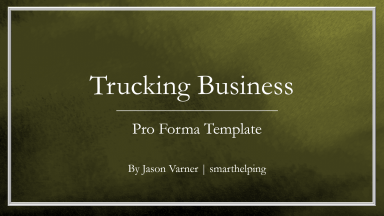
Last version published: 08/01/2024 09:25
Publication number: ELQ-36858-2
View all versions & Certificate

Excel-Based Financial Model for Profitable Trucking Operations
Build out key assumptions and test feasibilities of a trucking business. Scale to arbitrarily large sizes with dynamic revenue and variable cost configurations.
Further information
Produce detailed financial forecasts for a trucking / shipping business.
General trucking business (up to 3 delivery type / truck type configurations)






















